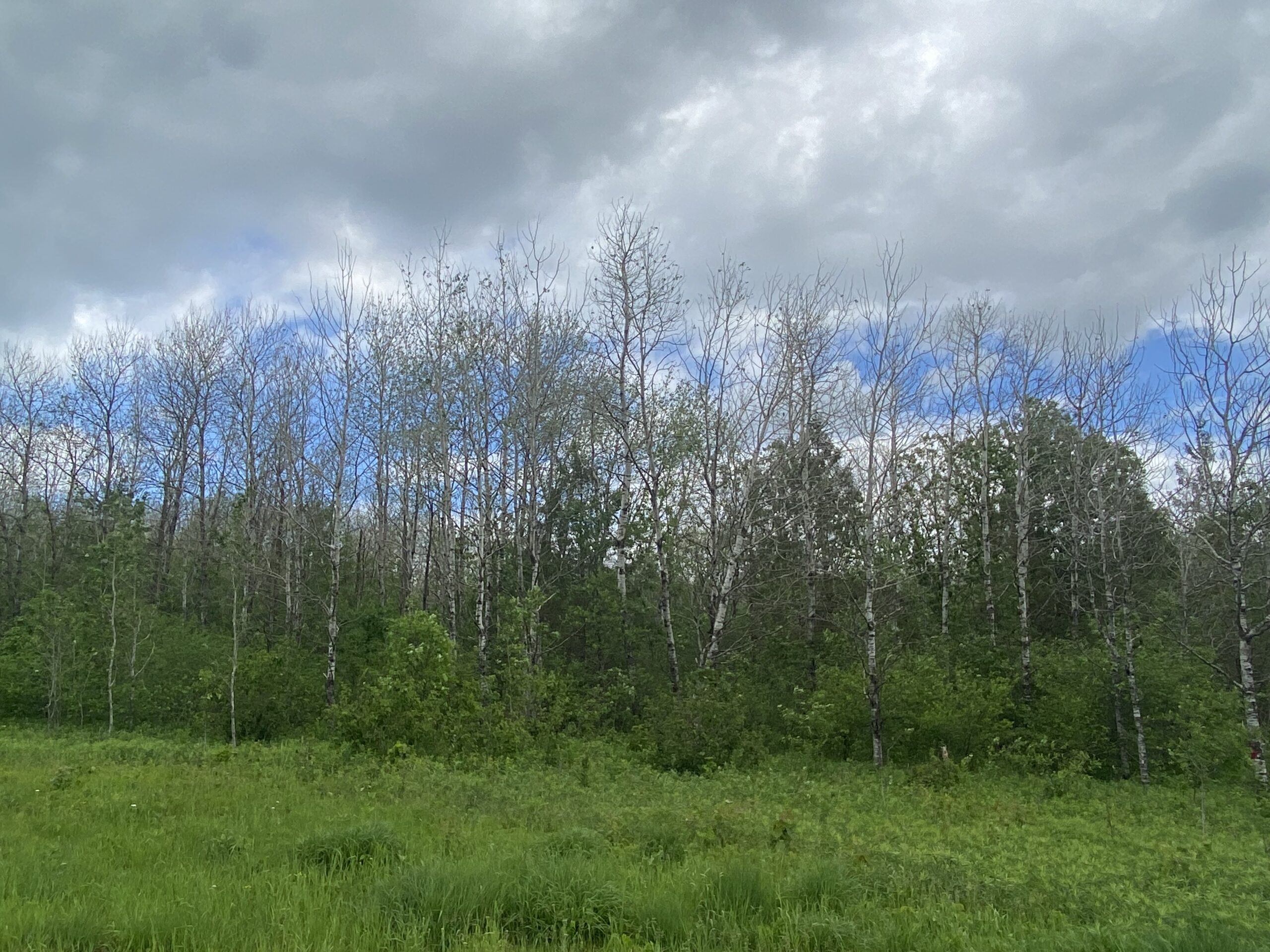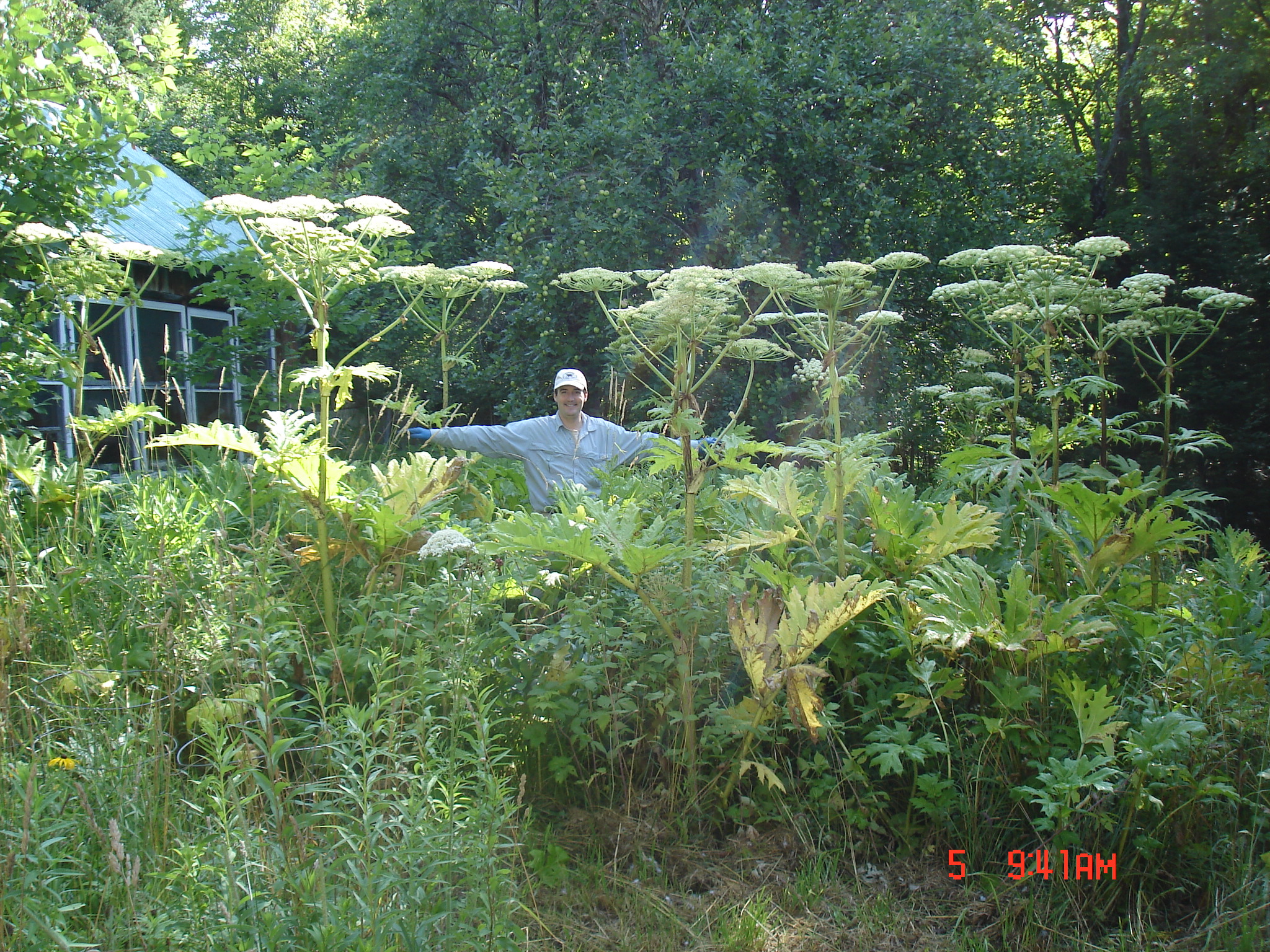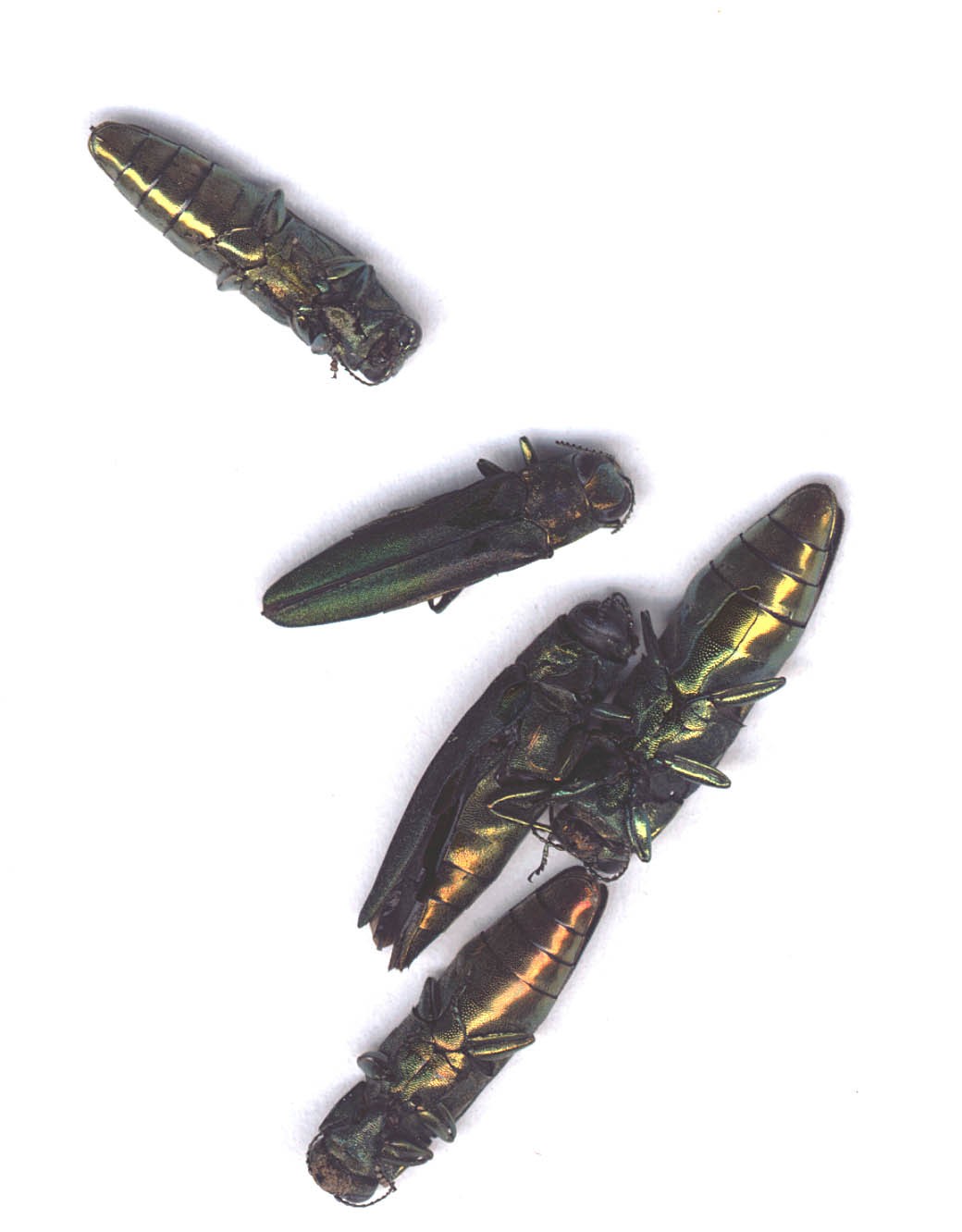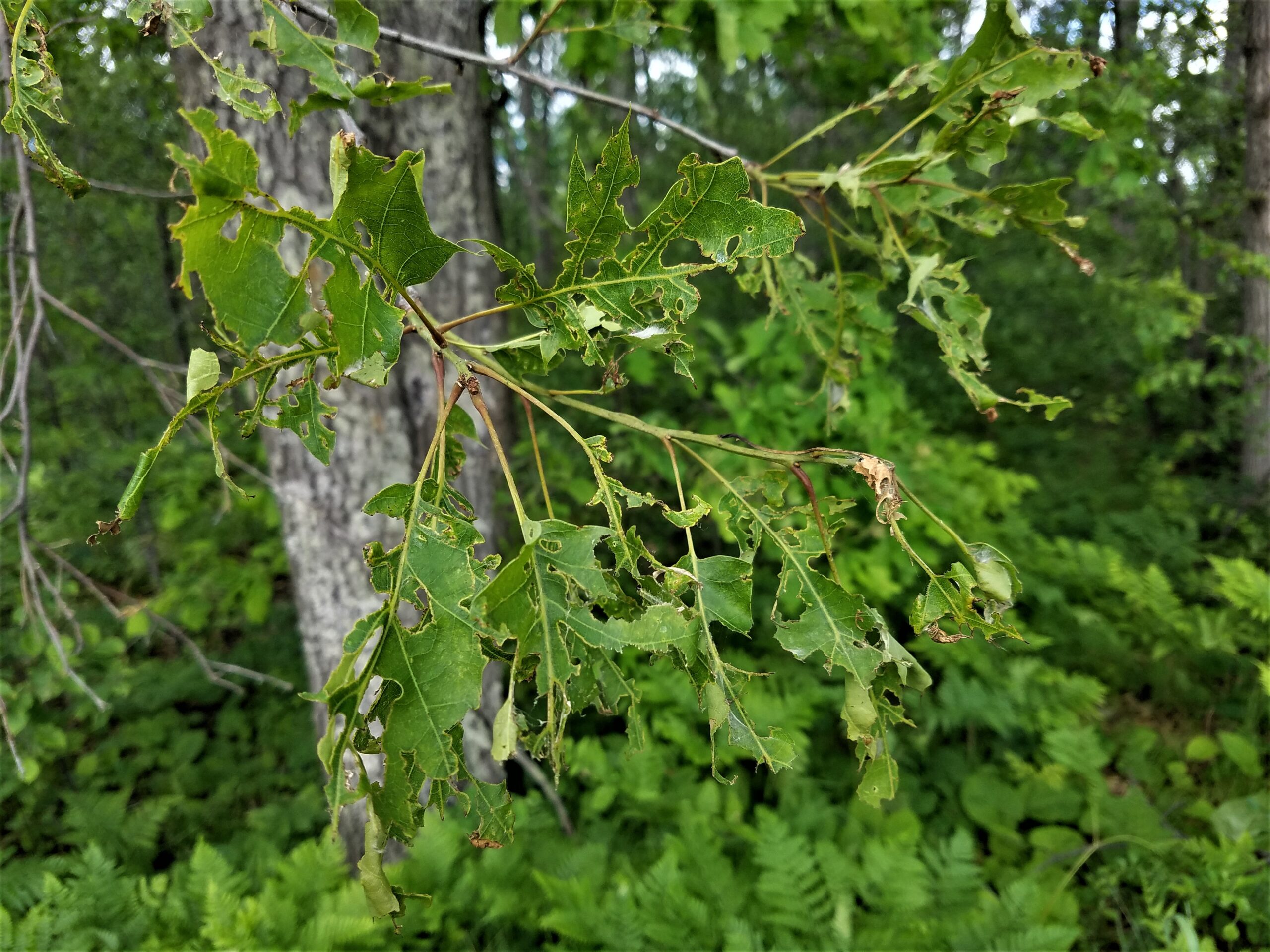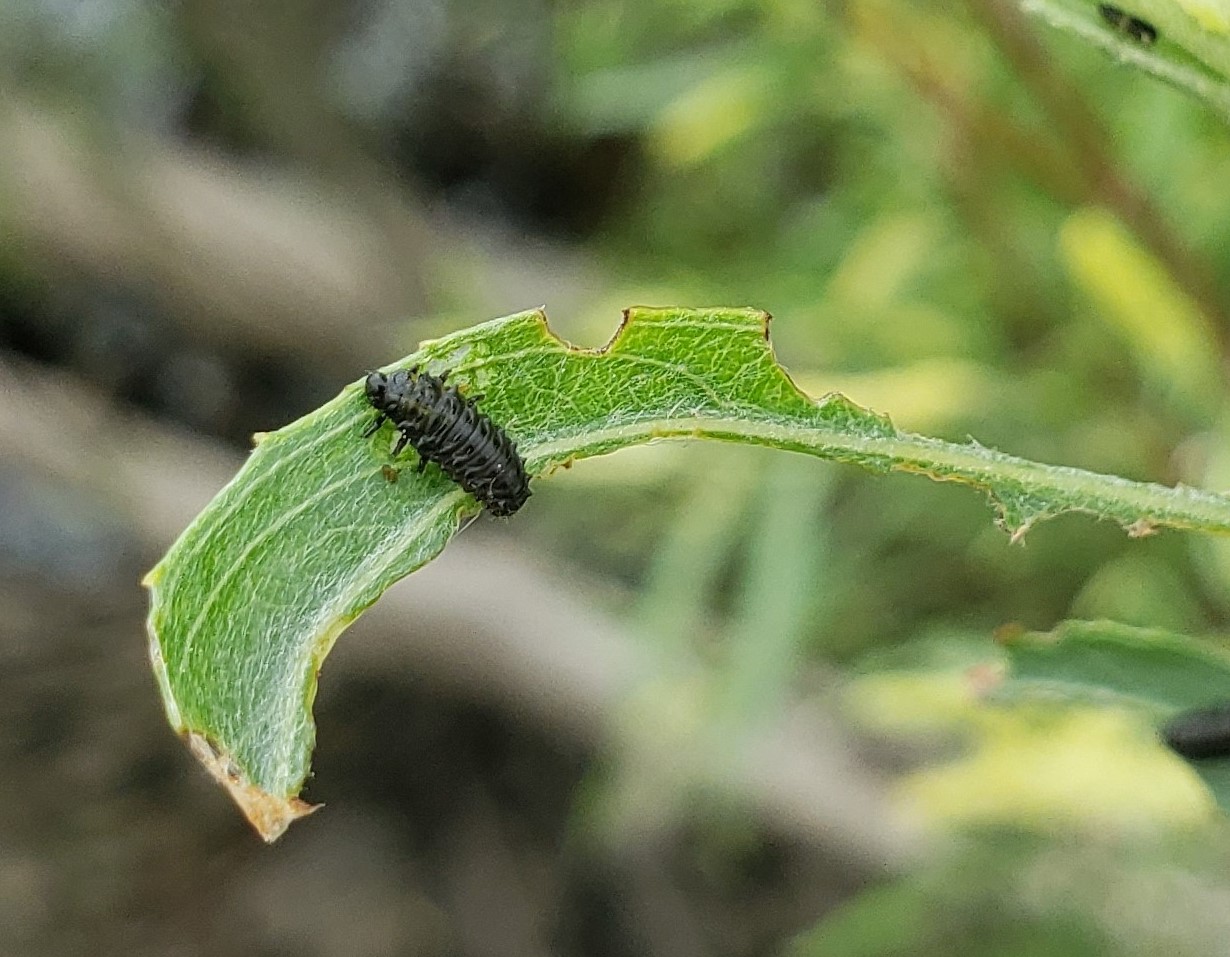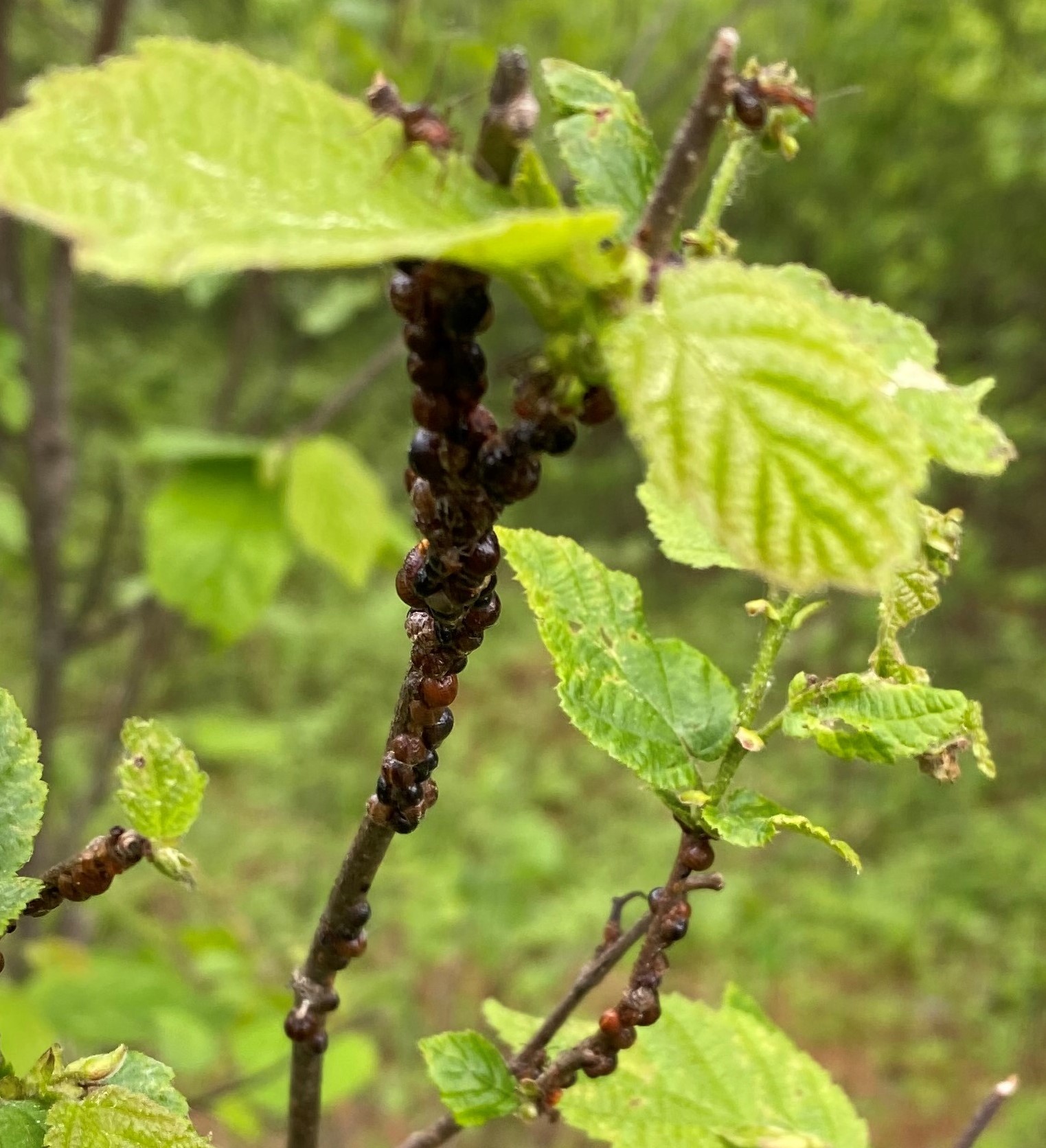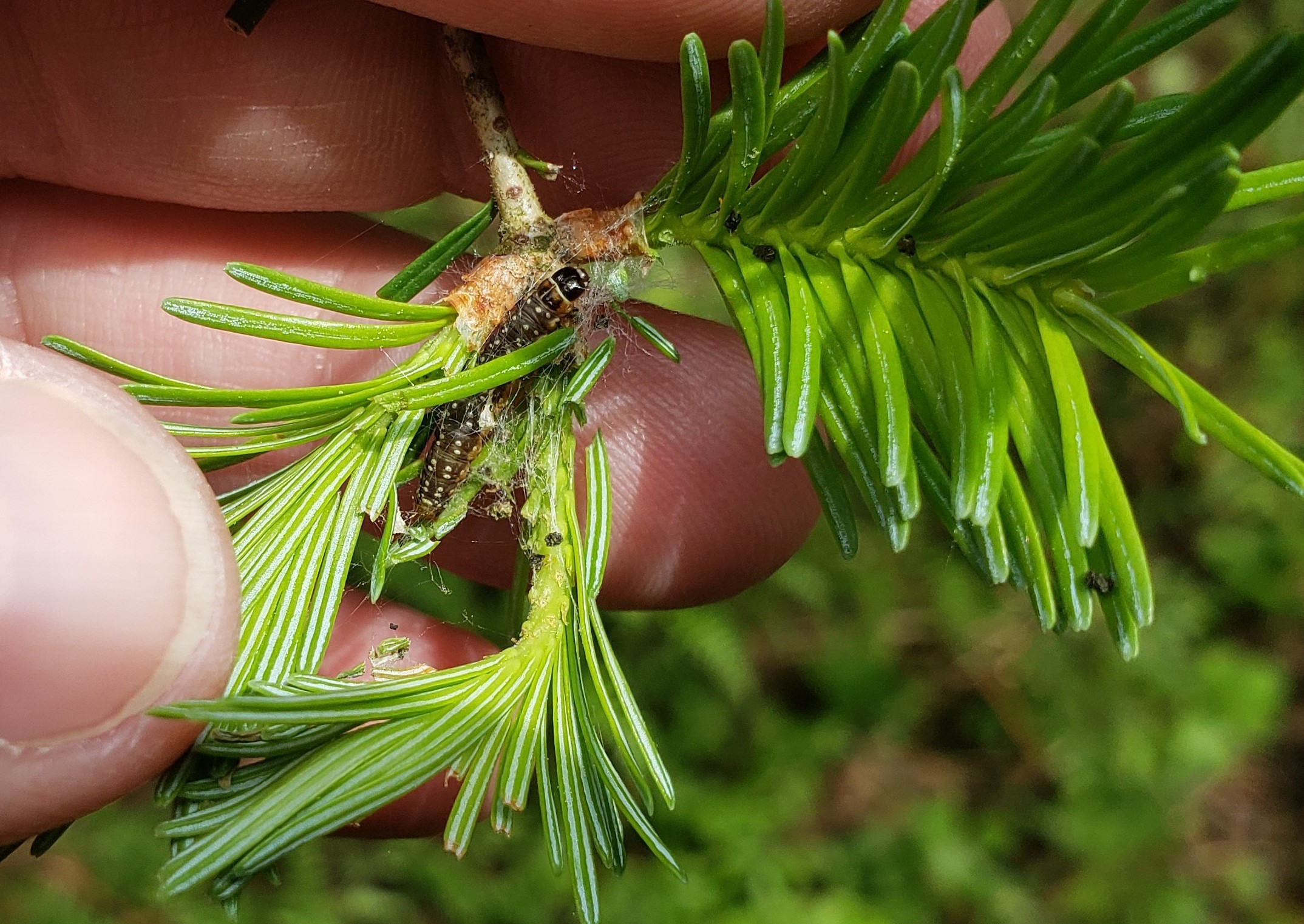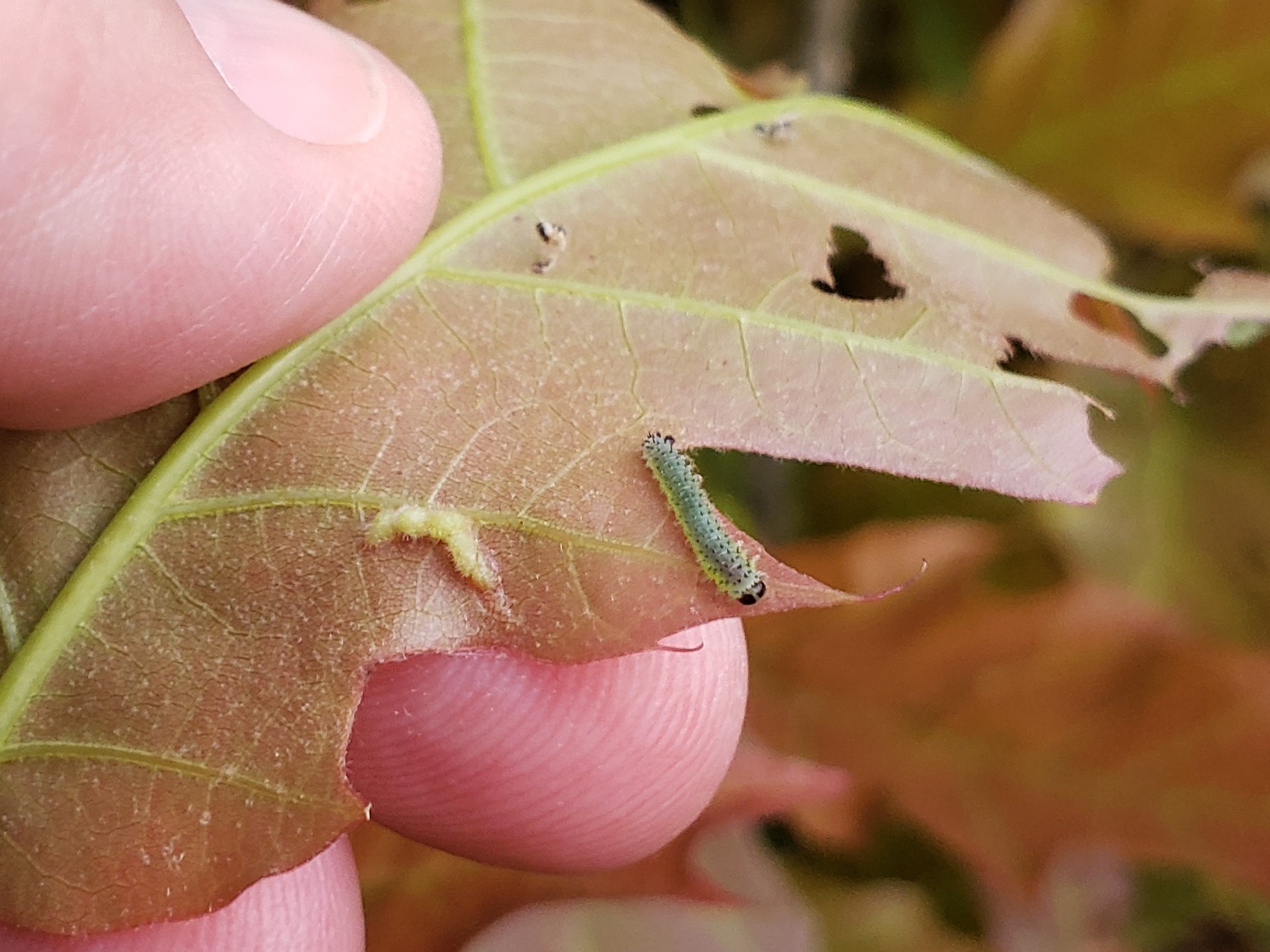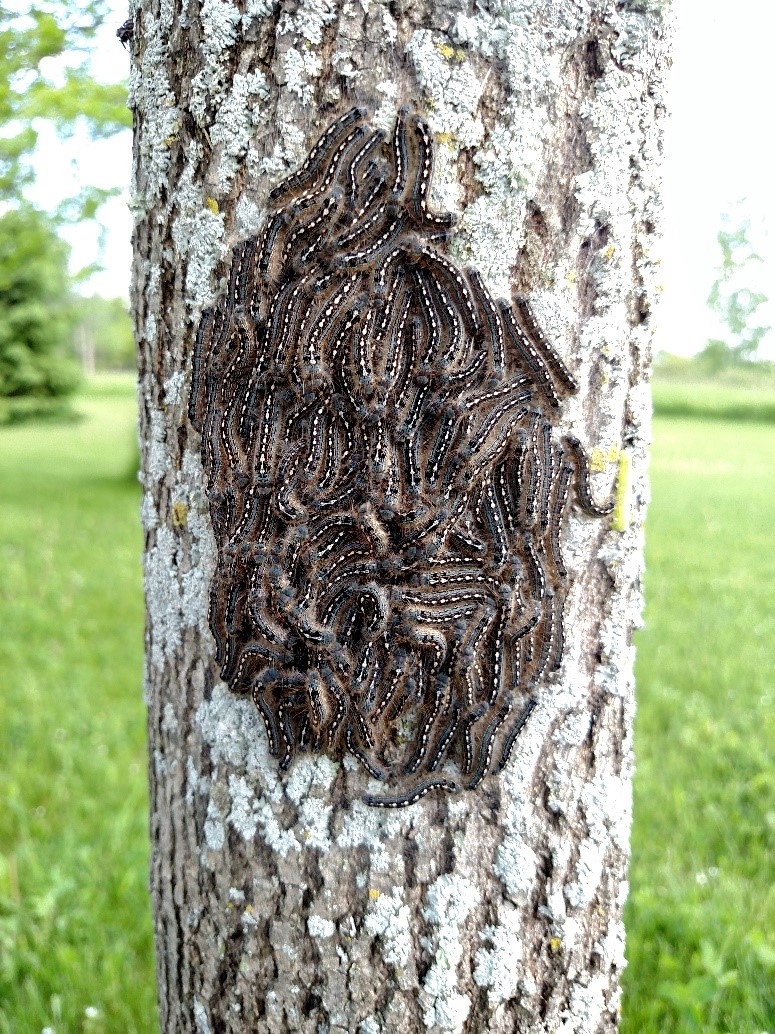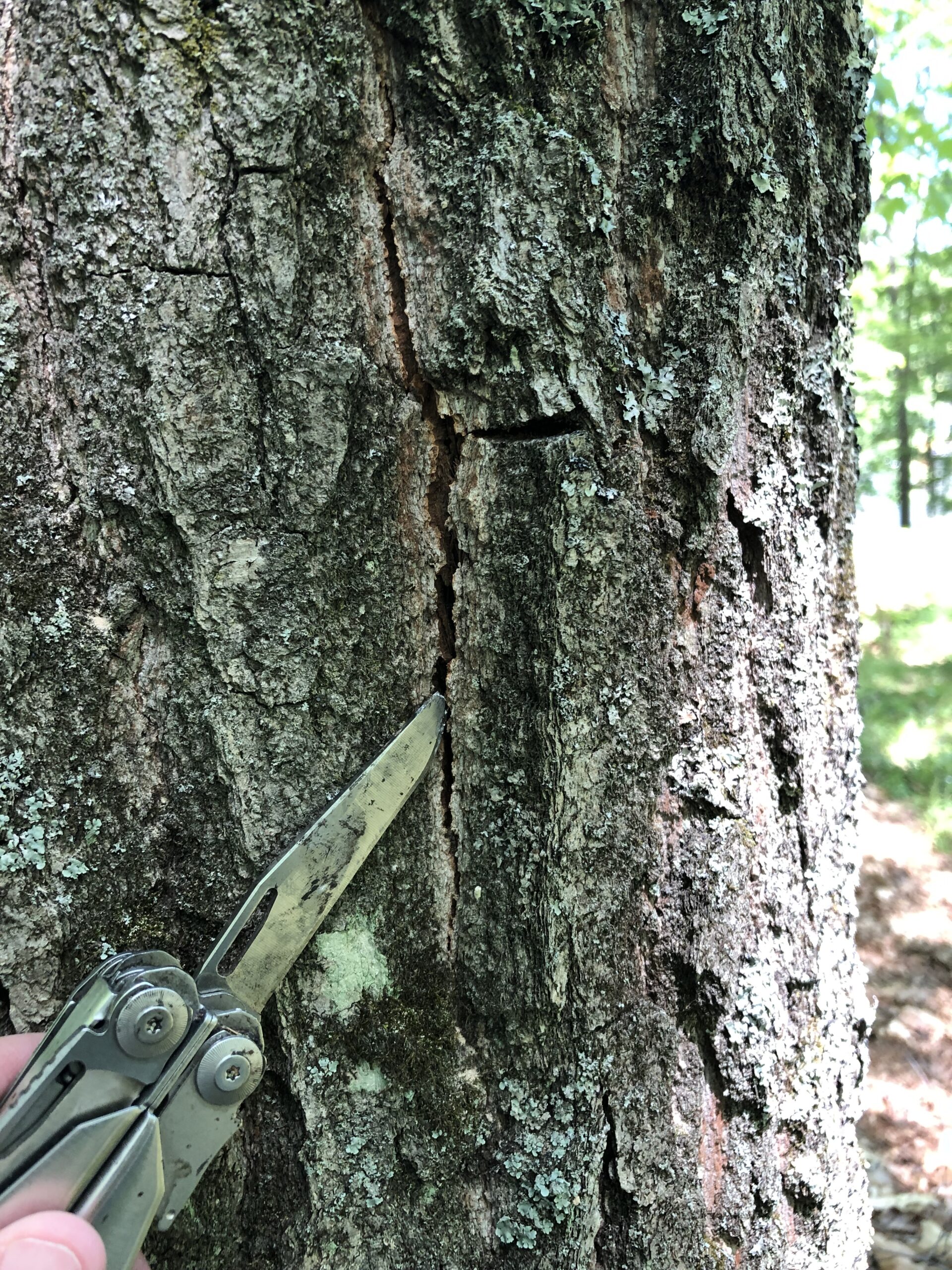By Paul Cigan, DNR Forest Health Specialist, Hayward, Paul.Cigan@wisconsin.gov or 715-416-4920
Conifer and hardwood trees have begun showing more apparent and often substantial signs and symptoms of damage from a severe hailstorm that spread across several northwestern Wisconsin counties on May 9, 2022.
The storm produced golf ball-size hailstones and high-speed winds causing catastrophic injury to tree branches and stems, in addition to defoliation. Few tree species were spared in its path. The heaviest impact occurred in northeastern Polk County, where defoliation of aspen and black locust reached nearly 100%, and pine exceeded 90% (Fig. 1). Red and white oaks show more moderate damage.
Continue reading “Catastrophic Hail Injury To Trees In Northwest Wisconsin”

